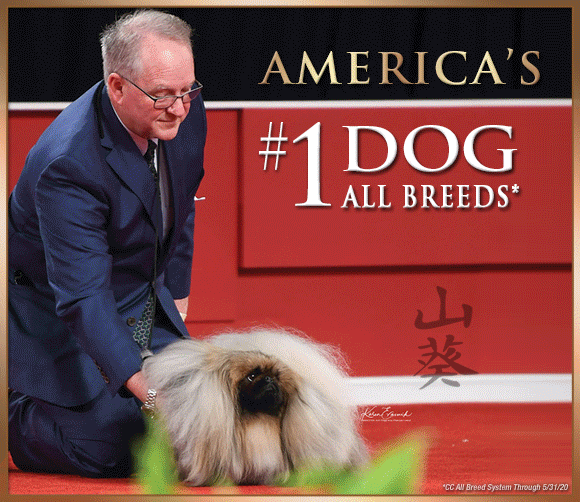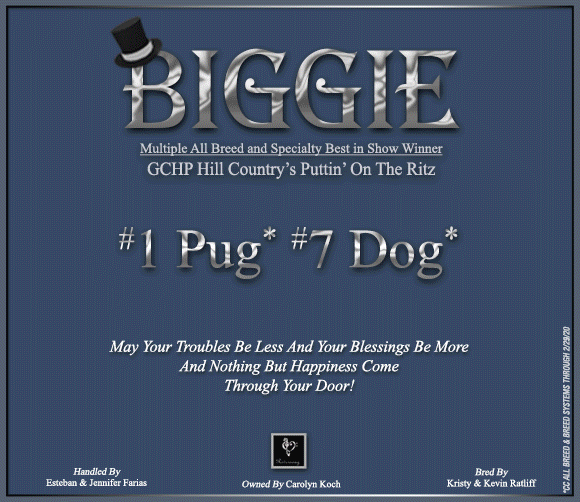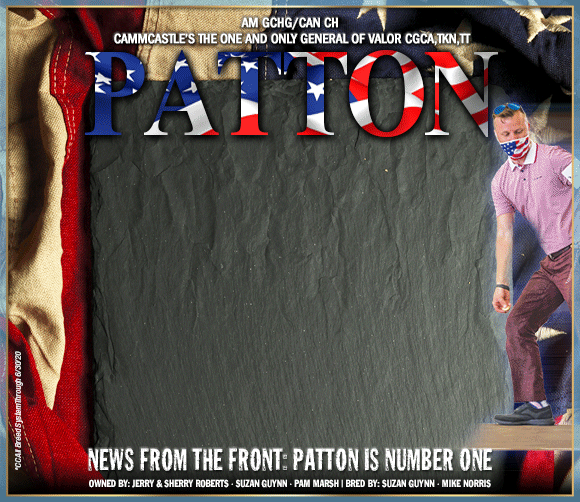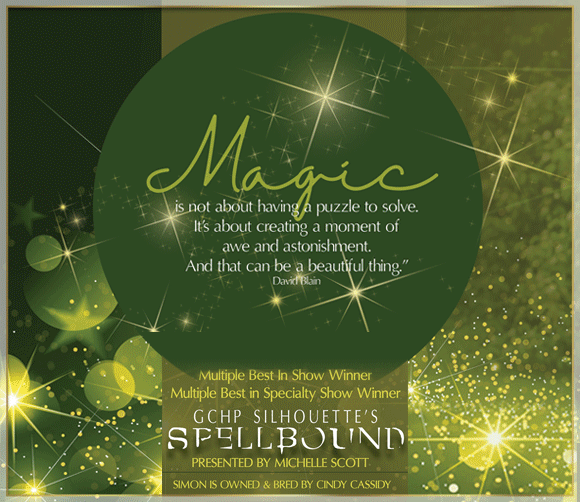Windholme Kennel: Putting Greyhounds on the Map
Click here to read the full article in our digital edition.
By Amy Fernandez
 Today’s dog game reflects our piecemeal, fragmented lives. Forever dividing our time, energy, and interest between a multitude of demands. Fanciers often comment on the continually changing crowds in their respective breeds, an observation supported by AKC statistics confirming that the average exhibitor bails out after five years. A generational legacy has become a rarity in this sport. Consequently, we’ve lost a goldmine of accumulated knowledge and talent.
Today’s dog game reflects our piecemeal, fragmented lives. Forever dividing our time, energy, and interest between a multitude of demands. Fanciers often comment on the continually changing crowds in their respective breeds, an observation supported by AKC statistics confirming that the average exhibitor bails out after five years. A generational legacy has become a rarity in this sport. Consequently, we’ve lost a goldmine of accumulated knowledge and talent.
The Windholme kennel of Harry Peters, Jr. stands at the forefront of these longstanding family traditions. Peters made wide-ranging contributions in many breeds, but he played a starring role in Greyhounds during that grand era when the breed dominated the ring.
He was the third generation of his family in the game, and his forebears set the bar very high. As often as not, this inherent challenge discourages later generations from following the tradition. Harry Peters, Jr. was not that man.
His grandfather, Samuel T. Peters, with partner Richard Williams, founded Williams and Peters coal brokers. Based on Broadway, their venture expanded into multiple coal and banking interests during his 35 years at the helm. In 1880 he staked a claim on Long Island’s Gold Coast, purchasing 300 hundred acres of waterfront property on the Great South Bay. His Windholme estate was described as a gentleman’s farm. Along with pigs, chickens, and cows, it featured a private fishing camp, a stable of polo ponies, a kennel of top-notch Foxhounds and Gundogs, spectacular formal gardens, and a palatial home.
He was president of a Long Island riding club, a member of the Westminster Kennel Club, and a passionate art collector. Peters amassed the world’s finest collection of rare jades, which was donated to the Metropolitan Museum of Art after his death at age 67 in 1921. His estate was divided between his widow Adeline, son Harry, and daughter Louisine Peters Weeks. She received 70 acres on the west side where she resided with her husband, Harold Weekes in the house her father built for them in 1917. Christened Wereholme, it was designed by famed architect Grovsner Atterbury who designed Forest Hill Gardens and part of the Metropolitan Museum of Art – where Peters was a trustee. Harry took title to 200+ acres on the east side of the estate. Each received $500,000 outright along with capital stock in this great industrial trust, which generated millions in annual profit.
Along with financial bliss, Harry Twyford Peters inherited his father’s interests – from fine art to coal. Born 1881, he graduated from Columbia 1903 and entered the coal business as a partner in William and Peters, retaining that position until his retirement.
Like his father, he also collected art and eventually headed the acquisitions committee for Boston’s China Trade Museum. But unlike his father, oriental art really didn’t appeal to him. His desultory attitude took an abrupt turn when his uncle Henry Havermeyer suggested that young Harry try something different. His suggestion to collect sporting prints came at a time when they were literally a dime a dozen. During his years in the coal business, Harry discovered countless gems in stable and harness shops. Their value subsequently skyrocketed. He earned an international reputation as the foremost expert on Currier and Ives prints, eventually writing three bestselling collectors’ guides.

He sent this family tradition to new heights by taking it in a new direction to reflect his individuality. That formula was equally successful when pursuing his interests in horses and dogs. In 1890 he established a Beagle pack –?at an age when most kids were asking for their first puppy. He bred and imported countless notable Beagles, and broke a major barrier on December 21, 1901, when his five-year old bitch, Ch. Windholme’s Bangle, became the breed’s first all-breed Best in Show winner. He worked with legendary names in the breed like Pottinger Dorsey, “the patriarch of the game” and became nationally respected as one of the few breeders successfully producing dual bench and field Beagles.
He became Westminster’s delegate in 1904 and two years later became a lead plaintiff in the notorious lawsuit against AKC initiated by the Ashland House Committee. It was far from the first or only dustup between AKC and Westminster, but the successful outcome marked one of his many important contributions to America’s dog game. He remained a member of Westminster until his death in 1948 and judged several assignments for the club between 1906 and 1931. In 1919 he comprised part of the BIS panel that chose the Airedale bitch, Ch Briergate Beauty.
Although he didn’t show Greyhounds, he was also involved with them from an early date. An anecdote from Sue Lackey’s Greyhounds in America illustrates his fondness for them. Reportedly, he arrived to steward at Westminster with his pet Greyhound in tow. Peters parked his pet under the judges table where it napped throughout the assignment. Like most American fanciers of that era, George West’s Gamecock kennel was his source for Greyhound stock. However, the breed didn’t become a Windholme priority until Harry Jr., known as Bud, established his kennel in 1929. His family connections removed most of the typical challenges of startup kennels, such as procuring quality foundation stock. Like his father, he went to George West and came home with Gamecock Dashing Warrior and Gamecock Dancing Witch.
West’s biggest success came with Ch. Gamecock Duke of Wales, whelped 1928. He broke ground for the breed with back to back wins in Westminster’s newly created Hound Group in 1931 and 1932. That year he also won Best American-Bred in Show and comprised part of West’s BIS team. Both wins were bestowed by Harry Peters Sr.
By then, Bud’s Windholme Greyhound kennel was no longer a startup by any definition. Internationally renowned bloodstock agent Stanley Petter, Jr. began breeding Greyhounds under the Hewly prefix in the early 1950s. In 2007, he was named AKC Hound Breeder of the Year, one of many milestones in his long, successful career. “After Mr. Peters died, Bill Brainard and I divided his kennel.” He was also given the Harry T. Peters, Jr. Windholme Pedigree Book by Windholme’s longtime kennel manager, Henry Hohman. Bound in red Moroccan leather, the handwritten entries range from barely legible scrawl to elegant script. They document half a century of prolific breeding.
 This volume confirms that Windholm’s first Greyhound import came second hand. Ch. Feminine Wiles of Longue Vue was whelped March 10, 1925. She descended directly from rock solid Cornish coursing stock through Butcher Boy. Originally purchased by Joseph Zane Batten for Robert Neeley’s Longue Vue kennel, Petter emphasizes her far-reaching impact on the breed. “She was by Farmers Boy II out of Ch. Butcher’s Bonita. The Butcher’s line lived on through the dam of Golden Falcon, so it lasted through two wars. Feminine Wiles founded a line for Mrs. Marion Scott and that tail female line was passed on to Mrs. Anderson and then to Mrs. Dupont and ended up here [at Hewley].”
This volume confirms that Windholm’s first Greyhound import came second hand. Ch. Feminine Wiles of Longue Vue was whelped March 10, 1925. She descended directly from rock solid Cornish coursing stock through Butcher Boy. Originally purchased by Joseph Zane Batten for Robert Neeley’s Longue Vue kennel, Petter emphasizes her far-reaching impact on the breed. “She was by Farmers Boy II out of Ch. Butcher’s Bonita. The Butcher’s line lived on through the dam of Golden Falcon, so it lasted through two wars. Feminine Wiles founded a line for Mrs. Marion Scott and that tail female line was passed on to Mrs. Anderson and then to Mrs. Dupont and ended up here [at Hewley].”
At Windholme, she was bred to Gamecock Dashing Warrior. The result was an overall pretty type that became noted for its perfect blend of substance and elegance, enhanced by lovely heads and expressions. Windholme type seemed to coalesce effortlessly but Bud Peters didn’t leave it to chance. “Bud had a big kennel and was very serious about Greyhounds for awhile.” Within a year of founding his kennel, he regularly visited British kennels to shop for ingredients. Paging through the Windholme kennel book he remarks, “For awhile, he was there all the time.”
Many of those trips took him right to Harry Peake’s Boveway kennel, established in 1886. Harry Peake Jr. exported legendary dogs in several breeds such as Ch. Nancolleth Markable, the Giralda Farms Pointer that won Westminster in 1932. But Boveway was best known for its Greyhounds. It was the source of Lansdowne’s foundation stock, including their big winner, Ch. Lansdowne Liskeard Fortunatus.
Windholme’s early acquisitions included Boveway Aurora of Windholme in 1931. That year he also imported a dog and bitch linebred on King of Venton, Daysman and Day Maid of Windholme. The following year, he imported Boveway Beau Brummel and Lilly of Devoir, two of his early big winners. “He also bought from the Matthews brothers,” says Petter, mentioning a few notable arrivals at Windholme, Viverdon High Flyer and Viverdon Ground Swell (Ch. Boveway Captain out of Viverdon Twilight).

A year later he purchased a black and white bitch, Ch. Picotee of Windholme, linebred on Viverdon Danger and White Rose of Boveway. “She was whelped the same year I was, 1934. She’s out of Bruno of Boveway by Boveway Lady, three of the four grandparents are Boveway. He didn’t fool around.” That seems rather an understatement as Petter continues paging through his Windholme book and recounting a seemingly endless list of imports. “He’s over there again the next year buying Southball Crystal Light, whelped in 1931. So, now he’s going back and buying breeding stock. When he went over he would stay at Claridges and he would arrange to have dogs brought to his room. He would gait them up and down the hallway to make his choices. During one trip I recall that he purchased two, including Shafleet Sovereignty.” The book also details extensive Windholme breeding programs in Beagles, Whippets, Cockers, Pointers, Norwich, and Smooth Fox Terriers throughout the 1930s and ‘40s.
He earned equal acclaim as a successful owner/handler taking his first Westminster group win with Boveway Beau Brummell. In 1933, Fredrick Jones reported on Windholme’s remarkable success in his annual Westminster roundup for The AKC Gazette.
“That beautiful, almost unmarked, white Greyhound bitch, Lilly of Devoir, handled so well by Harry T. Peters 2nd is certainly an aristocrat. After coming through such competition in her own breed, she was called upon to surpass Ch. Gamecock Duke of Wales, owned by George S. West, the Hound group winner in 1931 and 1932. Incidentally, this is the fourth year that a Greyhound has come into the final ring since last year’s top honors went to another Peters’ entry, Boveway Beau Brummel of Windholme.”
The previous year, Jones reported, “Harry T. Peters Jr. victory in the Hound division marks the third straight year that a Greyhound has represented the group in the final… He is a nice looking dog, with an almost entirely white coat, and had it not been for the way he moved on the final night, it is possible he might have made a stronger bid. Evidently he had slipped or in some other manner strained the muscles of one of his hindlegs previous to the final class and this gave him a slight lameness. It was tough luck for it counted against him in the judging.”
It was very tough luck. According to Sue Lackey’s Greyhounds in America, Beau Brummel ingested strychnine shortly before the final judging. Immediately prior to BIS he competed as part of Windholme’ BIS team along with Trevica Bango of Windholme, Daymaid of Eki, and Boveway Aurora of Windholme. But minutes later when he returned to the ring for the BIS challenge, he couldn’t stand on his feet. He died later that night. That year, Peters also took Breed in Dandies with the bitch Fysie Daffodill.
He returned and won the group with Lilly of Devoir in 1934 and also hosted the first annual meeting of the Greyhound club at his Manhattan residence. Unfortunately, Lilly didn’t make it through to Best that year. It went to Percy Roberts handling Flornell Spicy Bit of Halleston. In 1936, he picked up his third Westminster group with the dog that really put Windholme on the map, the beautiful white bitch Ch. White Rose of Boveway, That year Best went to another terrier, Ch. St. Margaret Magnificent of Clairedale

Windholme again earned special mention in Jones’s 1937 Westminster report. “Hound Group judge, Chetwood Smith chose as his best that beautiful greyhound bitch Ch. White Rose of Boveway, … owned and handled by Harry T. Peters, Jr. Of all the contestants this was the only one that had been in the final class before. She had carried off the Hound Group in 1936 and some thought she might scale the heights this year.” That wasn’t an outlandish possibility considering that George West judged Best that year.
But once again, Bud Peters lost to a Percy Roberts Wire, Ch. Flornell Spicypiece of Halleston.
Despite these galling defeats, less than a decade after founding his kennel, Windholme won consistently big at both the all breed and specialty level with several breeds. For instance, at Westminster 1938 his Pointer Ch. Windholme’s Sensation placed Group Third. Ironically, this seemed to be a “Catch 22” situation for him. The world kept setting the bar a bit higher for Harry T. Peters, Jr., and Windholme’s Westminster upset that year must have hit hard. “The two-time group winner Ch. White Rose of Boveway had been favored to win again,” especially since that year’s Hound Group judge was Joseph Batten. Along with many other high achievers in the Greyhound world, he had mentored Peters and worked closely with him, obtaining some truly excellent stock through this association. “But after careful examination of all contenders, the judge narrowed the battle to the Beagle Ch. Meadowlark Draftsman and the Dachshund Ch. Fax von Teckelhof, the eventual winner. The Greyhound was third.” Windholme won Best Brace in Show with Picote of Windholme and Windholme Captain. 1939.
Windholme took another shot at it in 1940, but didn’t get out of the group. “Second place went to one of the most remarkable dogs in the history of Westminster, the Greyhound bitch, Ch. White Rose of Boveway, owned by Harry T. Peters Jr. White Rose made her debut at the Garden in 1936, fresh from her triumphs in England. That year she won Group First. The following year she repeated the win. In 1938 and 1939 she took third in group. This year marked her fifth BOB, which ties the record set in 1939 by the Bloodhound Ch. Brigadier of Reynalton.” White Rose broke that record in 1941 with her sixth consecutive Breed win.
 Peters also became Westminster’s show Chairman in 1938, utilizing the opportunity to stage some of the most dazzling special features in the show’s history. His interest can be traced to a unique Westminster event that kicked off in 1937. “There was an interesting innovation afforded in the judging of the finale of the New York Hound Show, which this year, shared the arena with Westminster for the first time. For judging for the Grand Champion Pack Cup … each pack consisted of five couples so there were 60 hounds in the ring at the same time. The crowd took the hounds to heart, and the hunt livery brought generous splashes of pink and green to the ring.”
Peters also became Westminster’s show Chairman in 1938, utilizing the opportunity to stage some of the most dazzling special features in the show’s history. His interest can be traced to a unique Westminster event that kicked off in 1937. “There was an interesting innovation afforded in the judging of the finale of the New York Hound Show, which this year, shared the arena with Westminster for the first time. For judging for the Grand Champion Pack Cup … each pack consisted of five couples so there were 60 hounds in the ring at the same time. The crowd took the hounds to heart, and the hunt livery brought generous splashes of pink and green to the ring.”
Its debut success heralded a string of showstopping special events, often staged twice daily for both afternoon and evening crowds. The Masters of Foxhounds Association of America and National Beagle Club returned with an even more dramatic presentation, with the big award going to DuPont’s Foxcatcher Beagles. As show chairman that year, Peters also added Westminster’s first sheep herding demo, and ensured its audience appeal by personally hiring Caledonian bagpipers to accompany the performance.
Peters really shined during his stint as show chairman. Among other things, he successfully bridged a barrier that now seems impossible. He presented foxhunting to the mainstream public in a way that fostered appreciation for its history, tradition, purpose, and excitement. Describing the event for the Gazette in 1939, Jones remarked, “what really lent meaning to the feature was the incomparable work of Harry T. Peters M.F.H. at the microphone…in describing the hound pack classes over the public address system on the final night: I think this is my 45th Westminster.” Even the perpetually reticent Jones couldn’t conceal his surprise and delight. “This was no amateurish, perfunctory announcing job. It was a knowledgeable flow of commentary that stamped Mr. Peters as a qualified master of ceremonies. In this age of celebrated radio announcers, the chairman of Westminster has missed his calling.” That year’s hound show was also enlivened by French huntsman with French hunting horns which Peters had brought over for the occasion.
The success of this endeavor was undoubtedly enhanced when his Meadow Brook pack took the award. During his quarter century as Master of Foxhounds of the Meadow Brook Hunt, Peters’ father had transformed the pack’s overall type to predominantly English by gradually introducing imported stock. In 1940, “The crossbred foxhounds of Meadow Brook gave a smooth display of their unity and generally level quality to carry off the sterling silver trophy offered for the most representative pack of hounds.” Second place went to Foxcatcher Beagles. Once again, Jones called it, “one of the most colorful exhibitions of the show… it lent gaiety to an otherwise dramatic occasion and held the interest of that final night’s crowd, bringing a touch of the great outdoors to the Garden with the hunt liveries, horns, and voices of the hounds.”

True to tradition, Bud Peters also became an AKC judge. He unquestionably possessed an unerring eye for quality. However, early in his owner/handler career he discovered that judges can be incredibly capricious and inconsistent. That probably wasn’t the best life lesson for someone who was already firmly ensconced in a rarified, self-entitled world. Perhaps his judging persona is best illustrated by his abrupt reconsideration of the Whippet, Ch. Laguna Lad. Two weeks after awarding him Group First at Westminster, he left him out of the ribbons at a local Connecticut show. He judged the GCA specialty in 1953, taking Truly Fair of Mardormere to Best of Breed from the classes.
He judged at Westminster nine times from 1950 to 1976, and when he got his turn in the spotlight in 1975, he was true to form. His BIS choice of the Canadian-bred Old English Sheepdog, Ch. Sir Lancelot of Barvan, defied the best oddsmakers. He was also a highly respected working Beagle and Foxhound judge. And in the end, Foxhounds won his loyalty. Eventually, he moved permanently to his property in Orange, Virginia to become M.F.H. of the Montpelier Hunt. He explained the decision saying that hunt country had long ago disappeared from Long Island.
After the move, Bud Peters expanded his interests in shorthorn cattle, quarter horses, and Cheviot sheep. But it took a toll on his Greyhound breeding program. After his departure, it was primarily directed by Henry Hohman and his daughter Gail, who later handled for Windholme as Gail Volavka. Some breed historians contend that Windholme type subtly changed, becoming less elegant during the 1960s. However, it’s fair to say that he was never a hands-on breeder. “Frankly, I don’t think he was that interested in any breed,” says Petter. “He had dogs because it was a family tradition, and if he was going to have them he had the wherewithal and the eye to get the best.”
Windholme’s final import was Eagleslodge Pine Eagle in 1972. Per usual, he arranged to have several dogs brought to his room at Claridges, and made his selections as they were gaited in the long hallway. His kennel was gradually disbanded, and Petter recalls that, “Mr. Peters had had little to do with Greyhounds by the time he died,” at age 71 in 1981. The remaining seven dogs went to Hewley and Downsbragh.
Even at its height, Windholme stock was never freely accessible. “I don’t think any of these people bred for anyone but themselves; puppies would be traded for stud fees and whatnot with others in his social set. But I doubt that he ever sold a puppy in his life of any breed. I’m sure you had to know him if you wanted to breed to a dog of his. Then, he would probably let you do it.”
Today, family tradition ranks quite low on the list of recommended life strategies. It’s generally considered an impediment to self-awareness, personal expression, and ultimate satisfaction. The possibility of that disadvantage cannot be discounted when reviewing Windholme’s history. Parental expectations obviously played a major role in his life. However, this legacy also made him incapable of settling for second best. Regardless of the possible motivations for his accomplishments, Bud Peters made an undeniably great contribution to the modern Greyhound. Windholme’s impact reverberated far beyond its 52 year history.

Short URL: https://caninechronicle.com/?p=48866
Comments are closed











